I was there when TaleWorlds boldly released Mount & Blade with an appreciable amount of troops, and I was there when the game was iterated upon by the developers and transformed by modders. Now, I am here to review Mount & Blade II: Bannerlord.
Bannerlord takes us back to ancient Calradia, set a few hundred years before the (not) Baltics region we know from the first game took shape. The Empire has broken into three squabbling pieces. Vlandians, Battanians, and other outsiders fight them as much as they fight each other. And at the same time, raiders kill your parents and steal your siblings! Mount the mount and take the blade, it’s time to get some justice. And if that leads to a permanent rearrangement of the political makeup of the continent, oh well.
I put on my robe and Plumed Southern Helmet
As Mount & Blade II: Bannerlord builds upon everything that was great about the previous titles, it also finally graces us with a campaign, even if it’s very hands-off. Previously, you had no purpose in the game: you were killing for plunder and power with no higher goal in mind. Now, you can do all that to unify the Empire — or finally put it down for good.
Actually, your game can end a lot sooner. Nestled among Mount & Blade II: Bannerlord’s difficulty settings is the option to let clan members (party members) and heroes (other NPCs) actually die on the field of battle. But it’s not a binary choice. You can have the Reaper off a person or set his scythe to Realistic, which I assume calculates the odds of death the same way it does for any soldier who falls on the battlefield.
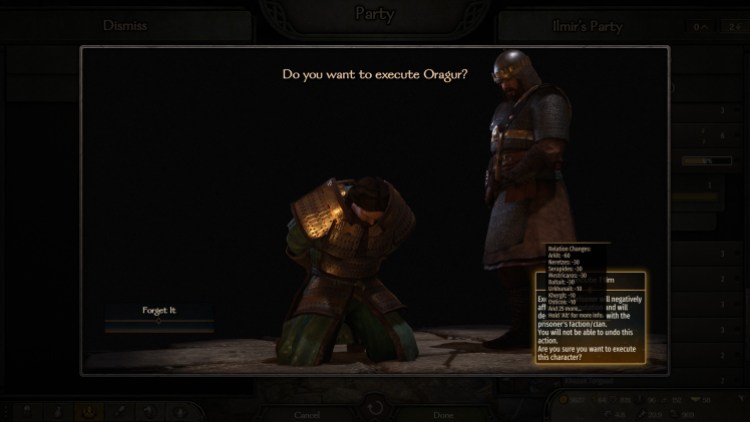
There is no setting to prevent you from executing prisoners, but doing so is a quick lesson on how the powerful have always had class consciousness.
I played on no deaths, but set the other settings to “Realistic” to give myself a challenge. Previously, I’d play with all sorts of resistance bonuses to make me and my troops tougher. And you know what? Going full realism was entirely doable as long as as I didn’t go for two-handed weapons.
For you see, while the larger part of many Mount & Blade II: Bannerlord games will be spent running around the campaign map looking for a good place to sell cheese, combat is what tickles our fancy. And this is a game series that takes melee as serious as Chivalry does. Which is to say, if you don’t have a shield, you better learn directional blocking really fast.
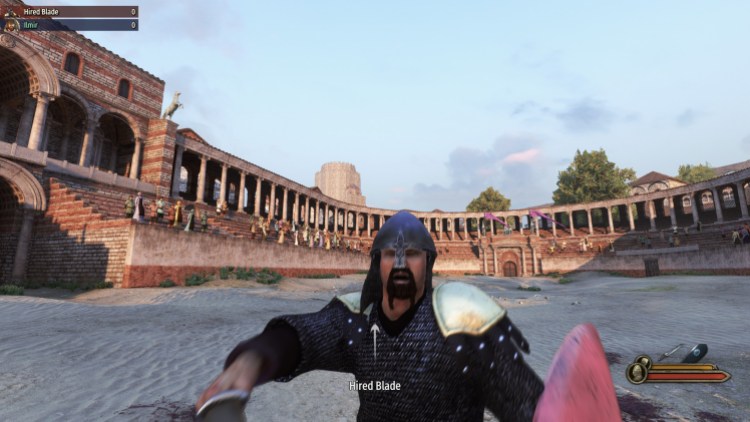
Mount and Blade has always been a third-person perspective game, but it also gives the real sickos a first-person option.
Of course, if you’re graced by reflexes built for playing turn-based strategy titles like me, you’ll want to stick with a sword-and-board, horse, and bow. It was a winning combo in the first game, and it’s a winning combo now. All sorts of two-handed swords, glaives, pikes, and axes do still have their own charm, even if they are harder to use. You’ll hit harder and look cooler, though.
Granted, I don’t know how widespread two-handed weapons were before plate armor made shields unnecessary to those who had it, but Mount & Blade II: Bannerlord plays fast and loose with historically appropriate weaponry.
A seven-nation army would most definitely hold me back
Mount & Blade II: Bannerlord has many weapon types and styles, with all sorts of tiers. Each faction is flavored after a certain type of historically inspired army. To name some examples, the Vlandians are the crossbow types, likely based on the Normans. Battanians are your Gaelic people, much more likely to run around with voulges and javelins. Khuzait are your horse archers inspired by the Mongols, and the Huns and the Asrai are your in-game medieval Egypt counterparts. They use a lot of horses, but some decent infantry as well.
Those differences matter because Mount & Blade II: Bannerlord isn’t a game about solo heroics. You’ll constantly recruit soldiers to fight alongside you, upgrade them in rank, and recruit them once more to replace them as they’re lost. Thus, the geographical region you hang out in will determine the composition of your army.
Or you can be like me, bounce around everywhere, and just flail around with an unholy hodgepodge of men (and some women).
You can field quite the number of soldiers on the battlefield, though. Mount & Blade II: Bannerlord easily handles roughly 100 soldiers per side, and once the ranks get cut down a little, more guys come in as reinforcements. So you can have really long battles with a lot of dead littering the fields. Some of these battles will be sieges, which means a lot of dead bodies will be littering the ground next to the walls. The game also fields all sorts of small combat and special forces attacks, from the ol’ reliable gear acquisition system of tournaments with free entry (if you win, you can get a piece of gear entirely out of your league) to 10-troop raids on bandit hideouts.
The controls on the battlefield are very much expanded in Mount & Blade II: Bannerlord, allowing you to group soldiers before battle and give them formations, delegate command, and so on. Unfortunately, once it all kicks off, you’ll see only as much as your character sees, which makes ordering a fight a bit hard. No wonder one of the most popular mods gives you an RTS camera.
Or you can just avoid the battlefield entirely. Like any good game, this has an auto-resolve feature, and characters may even have leadership skills that can improve troops in the simulation. You can totally play the game of intrigue and trading, though it’s a lesser experience, what with so much thought given to things that actually involve mounts and blades.
Politics is war by means less developed
Then again, the political aspect of Mount & Blade II: Bannerlord has grown. Not only are you developing your own clan, but you can take part in matters both domestic and of state. If you belong to a kingdom, you can expend your influence resources to vote for or against political propositions. Most of them offer a boon in exchange for a drawback. For example, implementing Serfdom means more income from villages but lower militia growth in towns since nobody is immigrating.
And that’s before you get into trying to score a politically good marriage or win yourself a fief in war. Even managing a village requires some skill (both player and character). But hey, now you have a corner of Calradia you really care about. Make sure to keep it stocked with troops and invest money into some infrastructure.
Speaking of skill, Mount & Blade II: Bannerlord not only has a fairly complicated leveling structure, but it also has a choice of traits to pick when you hit skill milestones. Do you want your crossbows to shoot 25% faster or to ignore armor below 20? Both of those choices have impact on your party as well — it’s never just about the player character, doubly so when your NPC companions also gain skills and traits.
Less talking
I understand that this review has gone all over the place, so let’s try to reign it in a little and talk about the bad aspects of Mount & Blade II: Bannerlord. For one, politics of war make as little sense as they do in almost every other game, and peace can be a dicey proposition. Playing domestic politics by currying favor from the nobles can also be tough. It’s also repetitive, as there are only so many side missions you can accept from village heads, rich townsfolk, and other nobles.
Of course, those three tiers have three different tiers of missions, all with increasing rewards. The trade system can sometimes be very frustrating, making you run all across the continent to find a market for your wares. And you can entirely miss out on blacksmithing if you don’t have anyone good with the skill.
On the battlefield, the maps feel a little too big and too empty. Maybe it’s in order to give the cavalry space (horses can’t turn on a dime), but it also leads to reinforcements coming into combat piecemeal. That may also be an issue with the unit AI. You can tell your infantry to form a shield wall, but as long as there’s cavalry involved, any kind of order quickly degenerates into a mosh pit. If you want a clash of well-dressed lines, you probably need to stick to games similar to Total War.
More ratings
The game’s visuals are mostly serviceable, but the facial animations really take a hit sometimes. The upper lip on female characters seems to be particularly allergic to the upper teeth, and it often refuses to descend that far down. The modeling of older people is also questionable. It’s a coin toss as to which side of 40 any given noble is on.
On the other hand, when the visuals work, they work hard. The forces involved in battles feel large, especially when they’re still holding together before scattering for combat. And the individual troops look good at higher levels where shiny metal replaces rags and leathers of dubious texturing. There’s a good variety of battlefields, and it seems the awful mountain maps with absurd peaks and dips are no longer a thing.
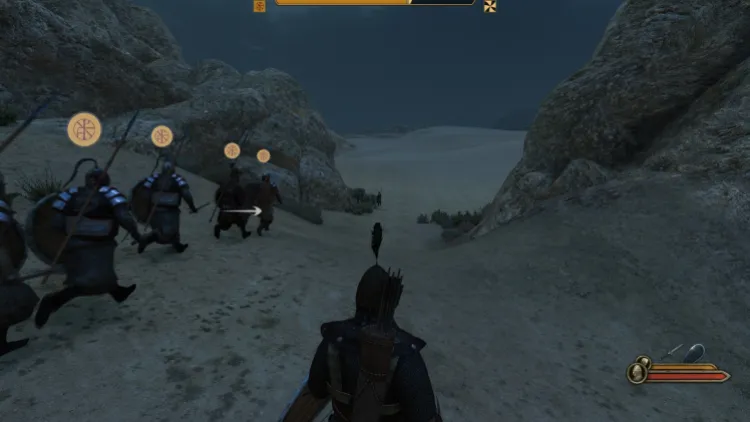
Look at those Sturgian Champions on the left operating operationally during a raid on a desert bandit hideout.
The audio is generally fine. Bannerlord‘s music isn’t gracing any YouTube compilations anytime soon, but it’s memorable and serviceable for the many, many hours you’ll put into the game. The variety of warnings and alerts that break up that music are enjoyable and easily memorable. The sound alert that comes when peace is announced generally sounds great — unless you were relying on the war to fill your coffers with loot. The not-yet-dead soldiers have plenty of barks to scream on the battlefield, though I’d wish there was more variety and more lines specific to the soldiers’ culture. Version 1.0 introduced voiced introduction lines to village heads and other notables, which was really freaky the first time it happened, but maybe more unit barks are possible in the future.
Mount & Blade II: Bannerlord is a great follow-up to the previous games in the series. It has some kinks that need to be ironed out and some things will just remain imperfect forever. However, it’s a brave new step for the developer.

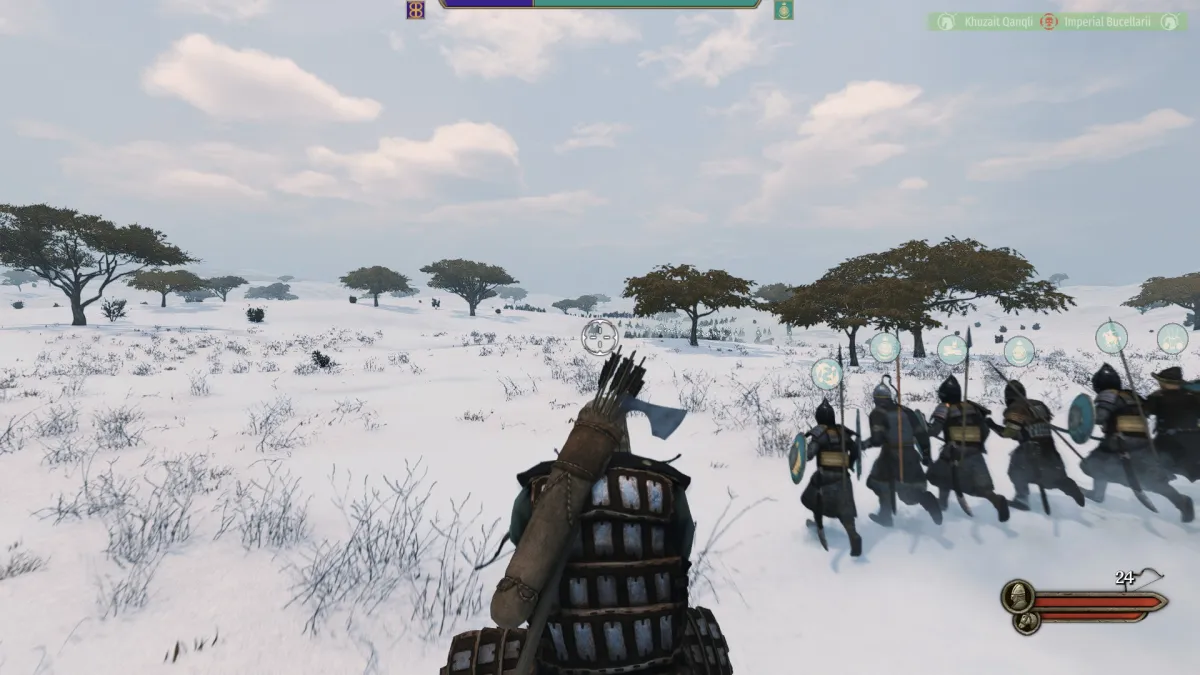

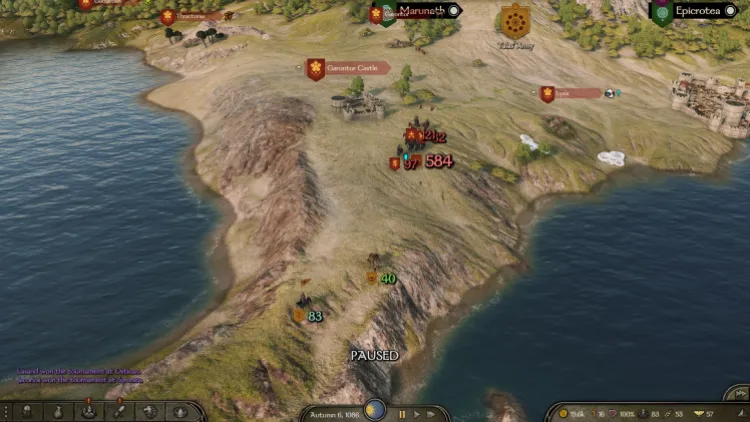
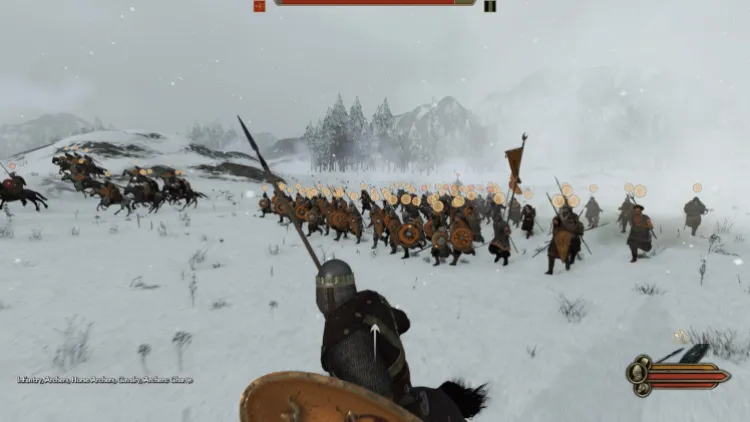
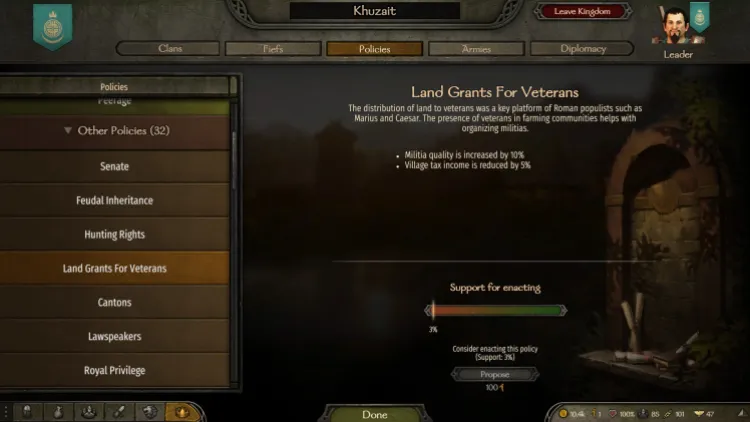







Published: Oct 28, 2022 04:00 pm